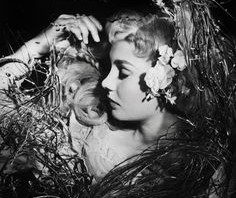On the first day of July in 1941 a few lucky New Yorkers with televisions tuned in to the WNBT station to see their Brooklyn Dodgers take on the visiting Phillies. The handful of baseball fans who got to their television sets early for this broadcast were about the experience history: they were about to see the first ever paid television advertisement. Instead of the usual test pattern clock that was displayed between programs, viewers saw a modified test pattern clock modeled …
The Clothes Make the Fairy Tale: “Goldie and Bear” 1.2 Review
For new viewers and readers, Goldie and Bear is Disney Junior’s latest fairy tale-themed television show. It’s cute and clever and computerized-cuddly. The season premiere confirmed that this show could prove its mettle. And most wonderfully, this second episode bought my viewership by showcasing my obsession, the one and only Little Red Riding Hood! Goldie and Bear has a greater commitment to storytelling and fairy tales than one would expect from a show for youngsters. To better analyze this intellectual storytelling, …
Continue reading “The Clothes Make the Fairy Tale: “Goldie and Bear” 1.2 Review”
Everything in Proportion: “Goldie and Bear” 1.1 Review
Goldie and Bear is a clever, wink-wink-nudge-nudge, fairy tale romp that is aimed towards children (it will premiere on Disney Junior) but delighted even this fully grown grown-up. Granted, this grown-up has a very high threshold for whimsy, but this children’s show is the real deal. Fairy tale’s own Maria Tatar—who, amongst her many other contributions to fairy tales and folklore, also chairs Harvard University’s Folklore and Mythology program—was brought in as a consultant. “When we are stumped,” she …
Continue reading “Everything in Proportion: “Goldie and Bear” 1.1 Review”
Promotional Small-Screen Fairies
Visualizing Wonder is project devoted to the neglected study and education of fairy tales on television. With tools like a searchable teleography and visualizations showing which characters show up on which shows we’ve made great strides is showing television’s love affair with fairy tales. That being said, there is one aspect of fairy tales on the small screen that we’ve yet to comment on thus far: advertisements. For as long as television has been around commercials and sponsorships have operated …
To Research and To Educate
Look—there she goes, the girl in the red hood, red cape, red hoodie, wolfskin. Do you see her? Does she carry a basket full of fresh bread and warm milk? Or does she seek to protect her sweet, sweet tortitas from the dapper wolf? And when she meets that wolf, does she reveal her own small, experienced fangs? Or whip a pistol from her knickers? Hello, my name is Lauren, and I’m a Little Red Riding Hood addict. Fortunately, I’m …
#Visualizingwonder: A Fairytales on TV Symposium
Yesterday and today, we are holding the Visualizing Wonder symposium at BYU. We have scholars from across the country and Canada participating, and we are excited! The purpose, participants and agenda are outlined below, and as soon as the conference is over, we will be updating the blog with a recap of what was discussed and the new research goals for this project. In the meantime, we now officially have a hashtag – #visualizingwonder. Stay tuned – more soon! …
Continue reading “#Visualizingwonder: A Fairytales on TV Symposium”
Glass Slippers and Small Screens: Rags to Riches and the American Dream
This is the powerpoint from Madeleine Dresden’s presentation at the 2014 American Folklore Society Conference in Santa Fe. Glass Slippers and Small Screens: Rags to Riches and the American Dream
Fairy Tales: Why the Glass Slipper Fits More than One Foot
Cinderella came out this week: in anticipation of this, there has been a pitched war between the bloggers and movie critics who say it represents a dangerous return to 1950s assumptions about womanhood and female desirability or that it’s a refreshingly straightforward reminder of belief in kindness and achieving impossible dreams. I haven’t seen the movie yet, so I won’t argue where on that spectrum Branagh’s effort falls. However, I would like to point out that both sides are using the phrase “fairy tale” …
Continue reading “Fairy Tales: Why the Glass Slipper Fits More than One Foot”
What Shakespeare and Screenwriters Have in Common
Question #2 in the Tea Party Question List: How does Shakespeare’s drawing on his “fairy tales” (i.e. Hamlet) compare to the modern synthesis of fairytales into popular entertainment? This is a difficult question to answer, mostly because of how little information we have about local lore in the time of Shakespeare and about his writing process. There are also significant differences in the way fairy tales were passed among audience members in Shakespeare’s time: for example, many of his audience members had …
Continue reading “What Shakespeare and Screenwriters Have in Common”
How Alice Became a Fairy Tale. Sort of.
In these posts we will be doing our best to provide a preliminary answer to some of the questions asked at last week’s Mad Hatter Tea Party. Please note that these answers are not intended to be exhaustive: rather, they are an illustration of how someone might start to research using the database, and we hope that they will encourage and enable readers to continue the process on their own. Question # 1 – How does war or international emergencies in …




